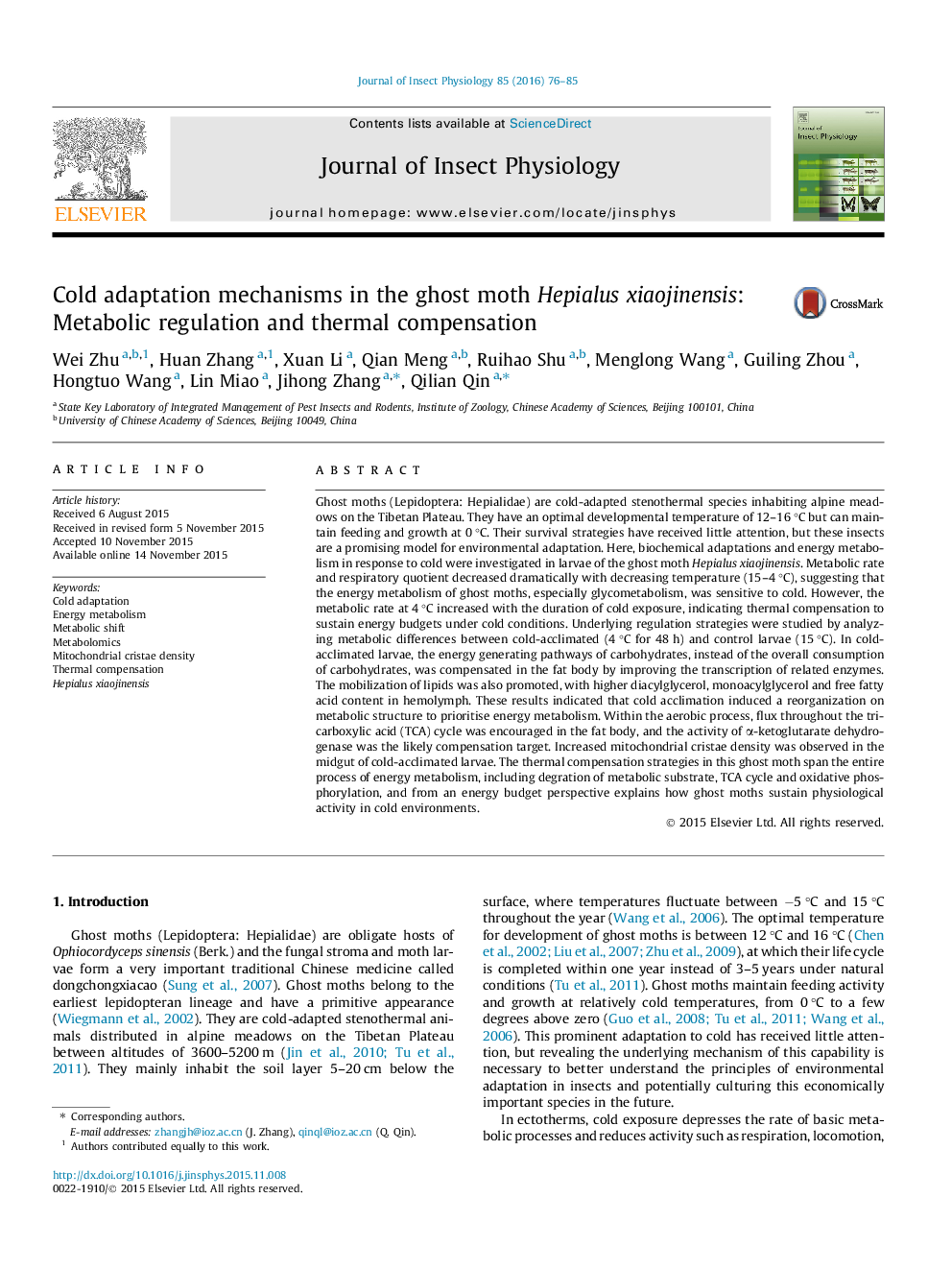| کد مقاله | کد نشریه | سال انتشار | مقاله انگلیسی | نسخه تمام متن |
|---|---|---|---|---|
| 5921413 | 1570985 | 2016 | 10 صفحه PDF | دانلود رایگان |

- Cold adaptation of ghost moth was discussed from the aspect of energy metabolism.
- Thermal compensation was observed in cold-acclimated Hepialus xiaojinensis larvae.
- Energy production is prioritised over other glycometabolic pathways.
- Mobilization of lipid is promoted in cold-acclimated larvae.
- Mitochondria are important compensation targets in cold-acclimated larvae.
Ghost moths (Lepidoptera: Hepialidae) are cold-adapted stenothermal species inhabiting alpine meadows on the Tibetan Plateau. They have an optimal developmental temperature of 12-16 °C but can maintain feeding and growth at 0 °C. Their survival strategies have received little attention, but these insects are a promising model for environmental adaptation. Here, biochemical adaptations and energy metabolism in response to cold were investigated in larvae of the ghost moth Hepialus xiaojinensis. Metabolic rate and respiratory quotient decreased dramatically with decreasing temperature (15-4 °C), suggesting that the energy metabolism of ghost moths, especially glycometabolism, was sensitive to cold. However, the metabolic rate at 4 °C increased with the duration of cold exposure, indicating thermal compensation to sustain energy budgets under cold conditions. Underlying regulation strategies were studied by analyzing metabolic differences between cold-acclimated (4 °C for 48 h) and control larvae (15 °C). In cold-acclimated larvae, the energy generating pathways of carbohydrates, instead of the overall consumption of carbohydrates, was compensated in the fat body by improving the transcription of related enzymes. The mobilization of lipids was also promoted, with higher diacylglycerol, monoacylglycerol and free fatty acid content in hemolymph. These results indicated that cold acclimation induced a reorganization on metabolic structure to prioritise energy metabolism. Within the aerobic process, flux throughout the tricarboxylic acid (TCA) cycle was encouraged in the fat body, and the activity of α-ketoglutarate dehydrogenase was the likely compensation target. Increased mitochondrial cristae density was observed in the midgut of cold-acclimated larvae. The thermal compensation strategies in this ghost moth span the entire process of energy metabolism, including degration of metabolic substrate, TCA cycle and oxidative phosphorylation, and from an energy budget perspective explains how ghost moths sustain physiological activity in cold environments.
109
Journal: Journal of Insect Physiology - Volume 85, February 2016, Pages 76-85